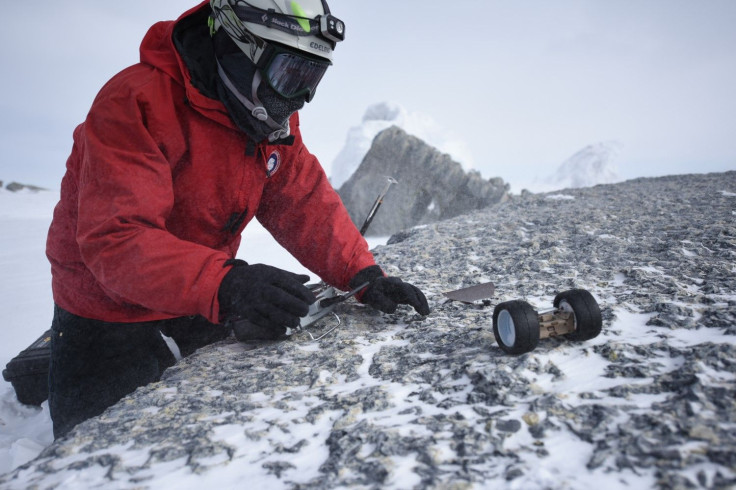Little Robot On A Mission To Mars? NASA Makes A Friend For The Mars Rover

NASA is developing a robot that could go where no robot has gone before: over and under difficult terrain on Mars or another planet.
The PUFFER — Pop-Up Flat Folding Explorer Robot — could traverse ground that a standard rover would get caught on, making a helpful travel companion. The space administration says its Jet Propulsion Laboratory in California is working on the little trooper, which will be lightweight and “was inspired by origami.”
Read: The Signs of Alien Life on Other Planets
A NASA video (below) shows how it’s done: The robot can fold into itself to squeeze underneath short obstacles or use its tailfin as leverage to propel itself up and over them. And it could last a long time because it has solar panels on its underside so it can recharge.
PUFFER wouldn’t go on a solo journey to Mars, but would be a teammate that could tag in when a larger rover faces a topographical blockade.
“The idea is to explore areas that might be too risky for a full-fledged rover to go, such as steep slopes or behind sand dunes,” according to NASA. “It’s designed to skitter up 45-degree slopes, investigate overhangs and even drop into pits or craters.”

It could also potentially be deployed, on its own or in a whole troop of PUFFERS, to maximize the amount of work the traveling machines are doing while exploring another planet, Mars being the primary target.
So far PUFFER has tested well on a couple of wildly different places on Earth: in the Mojave Desert and the Mt. Erebus volcano in Antarctica. The former is often used for Mars-related research because of its similarity to terrain on Mars.
“The next step is making PUFFER a scientist,” NASA said. “The JPL team is looking at adding a number of instruments that would allow it to sample water for organic material, or a spectrometer to study the chemical makeup of its environment.”
But just as children grow up, so may PUFFER — according to NASA, it may eventually be “as large as a breadbox, sacrificing its microbot size for added robustness.”
It wouldn’t be the first robot sent to Mars to collect samples and make observations. Of the previous ones sent to the Red Planet, Curiosity is still operating there, learning about the geology and environment of Earth’s neighbor and searching for clues about alien life. Curiosity is much larger than PUFFER, with six wheels that are almost 1.5 feet wide.
“Small robotic explorers like PUFFER could change the way we do science on Mars,” Jaakko Karras, PUFFER’s project manager at JPL, said in the NASA report. “Like Sojourner before it, we think it’s an exciting advance in robotic design.”
See also:
© Copyright IBTimes 2024. All rights reserved.





















